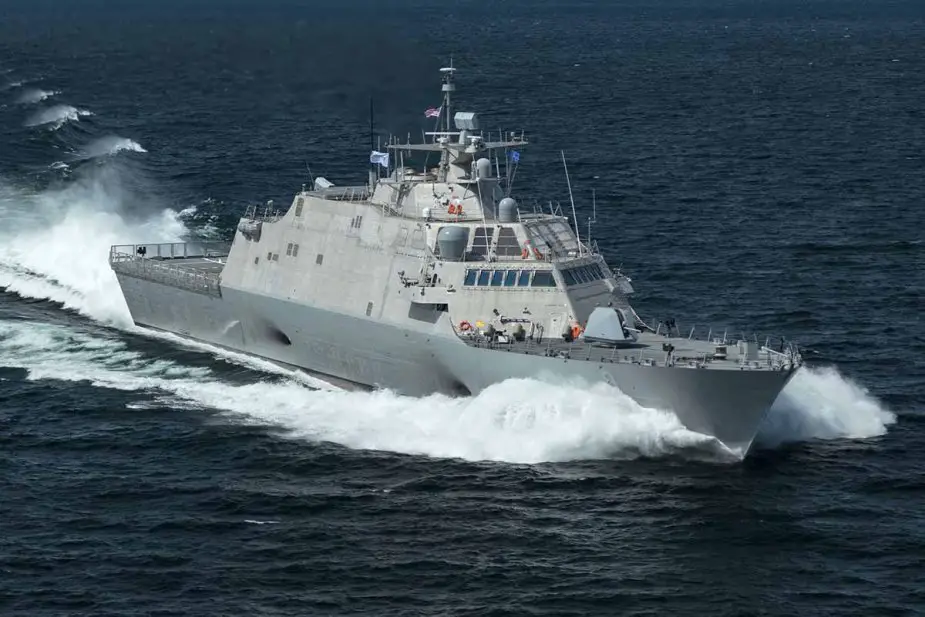Lockheed Martin Corp., Baltimore, Maryland, is awarded a $22,436,852 letter contract for the integration, demonstration, testing and operation of the Layered Laser Defense (LLD) weapon system prototype onboard a Navy littoral combat ship while that vessel is underway.
Lockheed Martin Corp., Baltimore, Maryland, is awarded a $22,436,852 letter contract for the integration, demonstration, testing and operation of the Layered Laser Defense (LLD) weapon system prototype onboard a Navy littoral combat ship while that vessel is underway.
 USS Little Rock (LCS 9) during Acceptance Trials in Lake Michigan (Picture source: Lockheed Martin)
USS Little Rock (LCS 9) during Acceptance Trials in Lake Michigan (Picture source: Lockheed Martin)
The contract awarded by the Office of Naval Research (OBR), calls for “the integration, demonstration, testing and operation of the LLD weapon system prototype onboard a littoral combat ship while that vessel is underway”. This will be the first time a laser weapon system is integrated onboard an LCS class vessel.
Key areas of work to be performed include development of a prototype structure and enclosure to protect the LLD from ships motion and maritime environment in a mission module format; system integration and test with government-furnished equipment; platform integration and system operational verification and test; systems engineering; test planning; data collection and analysis support; and operational demonstration.
The U.S. Navy is developing multiple laser weapon systems under the larger Navy Laser Family of Systems (NLFoS) effort. These include Solid-State Laser – Technology Maturation (SSL-TM), the High Energy Laser and Integrated Optical-dazzler and Surveillance (HELIOS), Ruggedized High Energy Laser (RHEL), and the Optical Dazzling Interdictor, Navy (ODIN) efforts.
The SSL-TM is designed for amphibious assault ships, while the HELIOS and ODIN are designed for guided-missile destroyers. The are currently no plans to install the RHEL system on naval vessels.
Work is expected to be complete by July 2021. The total cumulative value of this contract is $22,436,852.







